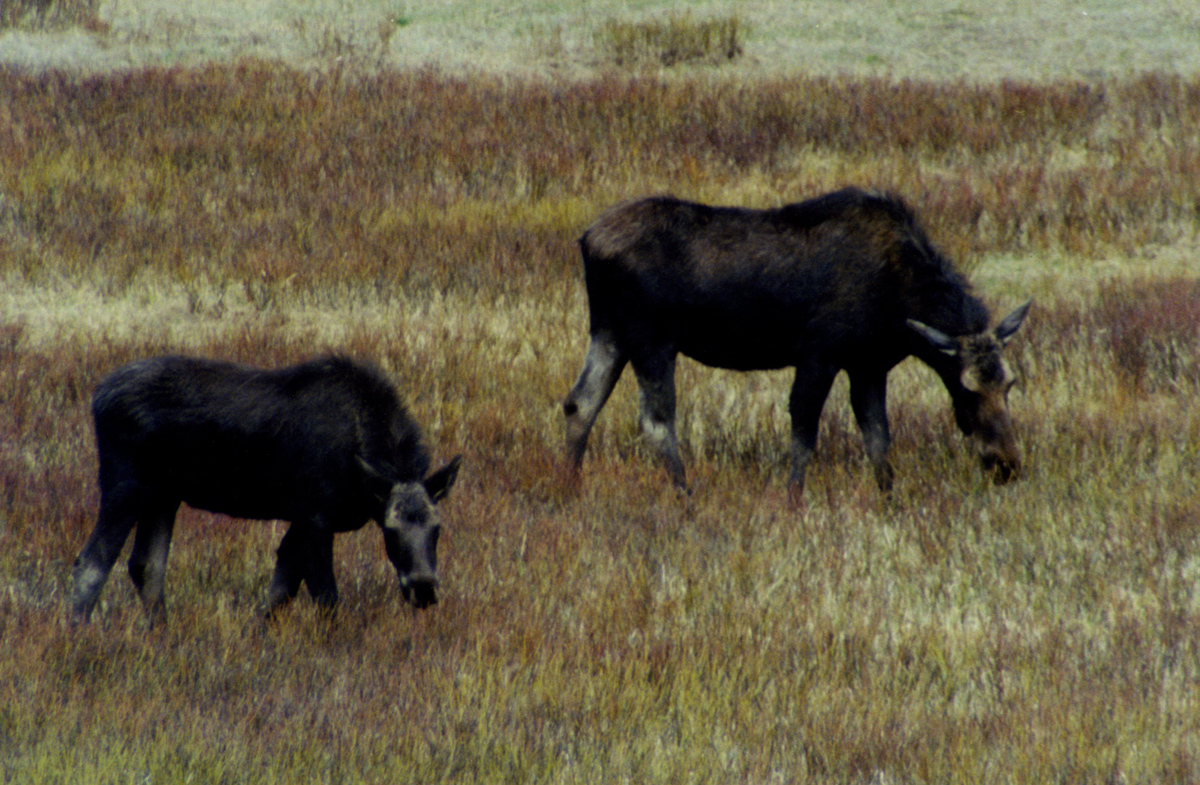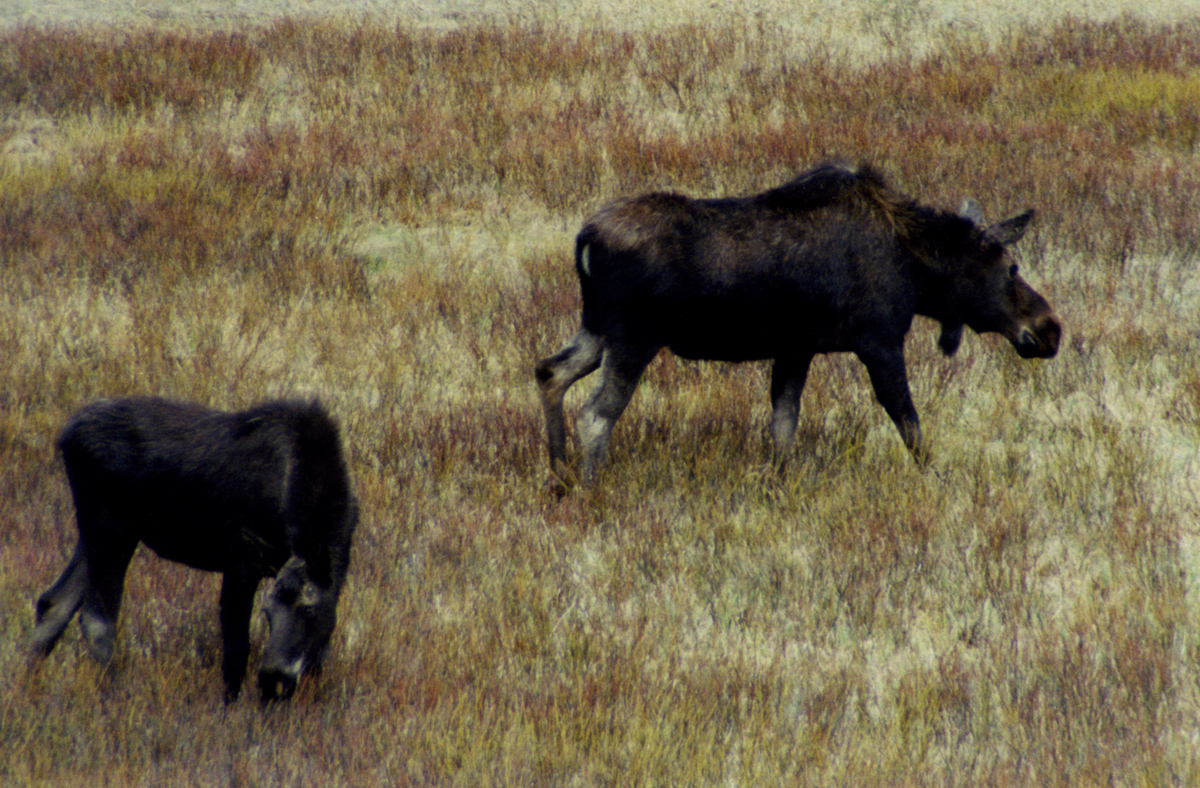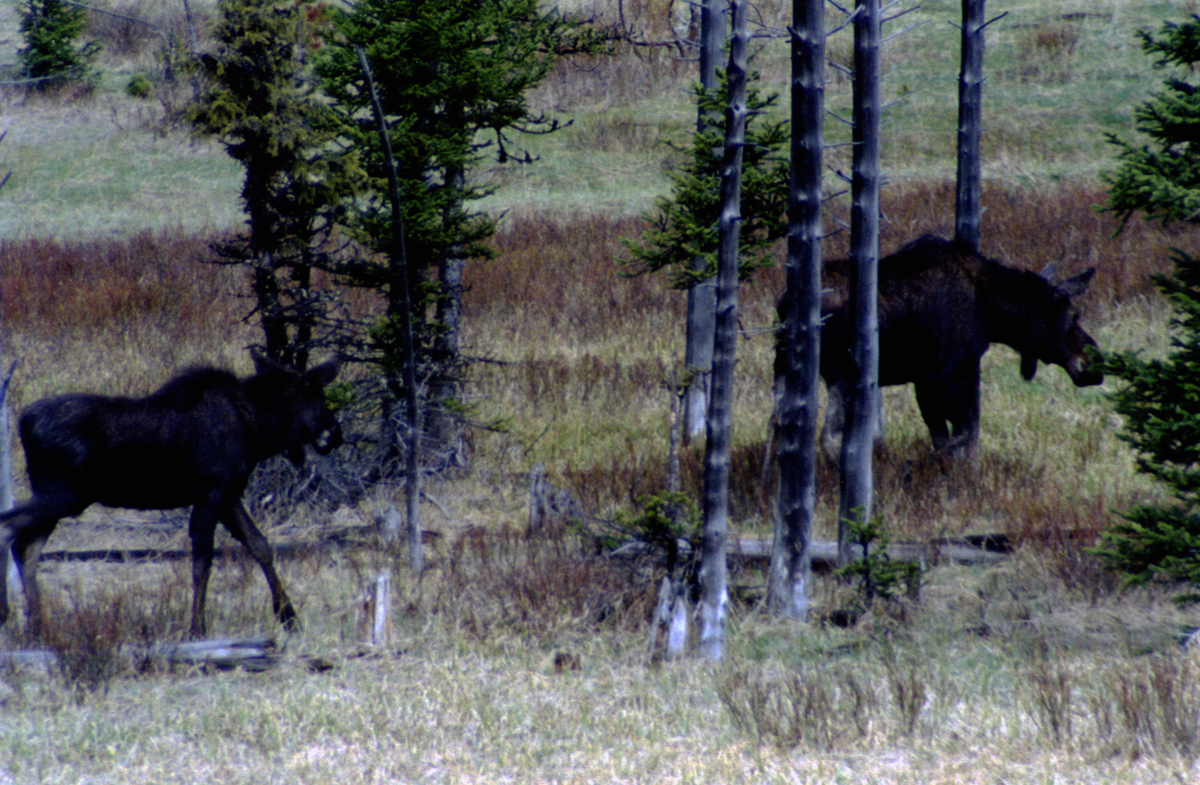


Moose (Alces alces)
Yellowstone National Park
| Classification | ||||||
| Phylum | Class | Order | Family | Subfamily | Genus | Species |
| Chordata | Mammalia | Artiodactyla | Cervidae | Capreolinae | Alces | Alces alces |
 |
Moose (Alces alces) Moose, the largest member of the deer family, were reportedly very rare in northwest Wyoming when Yellowstone National Park was established in 1872. Subsequent protection from hunting and wolf control programs may have contributed to increased numbers but suppression of forest fires probably was the most important factor, since moose here depend on mature fir forests for winter survival. Moose breed from early September to November and one to three calves are born in May or June. Calves weigh 25 to 35 pounds at birth but grow rapidly; adult females (cows) weigh up to 800 pounds and males (bulls) up to 1300 pounds. Bulls are readily identified by their large, palmate antlers, which are shed annually, and their bells, an apparently useless dewlap of skin and hair that dangles from the throat. Moose live mostly solitary lives, and die from disease, starvation, or predation by wolves and, occasionally, by grizzly bears. Surveys in the late 1980s suggested a total park population of fewer than 1000 moose. Research on radio-collared moose in northern Yellowstone has shown that when snow depth forces moose from low-elevation willow stands in November, they move up to as high as 8500 feet, to winter in mature stands of subalpine fir and Douglas-fir. They browse fir almost exclusively during the deep-snow winter months. Tyers (unpubl. data) found that moose ate 39.6 percent subalpine fir, 25.5 percent willows, 10.6 percent lodgepole pine, 4.6 percent gooseberry, and 4 percent buffaloberry. Snow is not as deep under a canopy of conifer branches since some snow remains on them, and a crust that may restrict moose movements is less likely to form on shaded snow. However, Tyers found that moose could winter in areas where snow considerably deeper than that which elk could withstand. The moose calf crop has been declining since the fires of 1988. During that summer there was also high predation of moose by grizzly bears in small patches of surviving timber. The winter following the fires many old moose died, probably as a combined result of the loss of good moose forage and a harsh winter. The fires forced some moose into poorer habitats, with the result that some almost doubled their home range, using deeper snow areas than previously, and sometimes browsing burned lodgepole pines. Unlike moose habitat elsewhere, northern Yellowstone does not have woody browse species that will come in quickly after a fire and extend above the snowpack to provide winter food. Therefore, the overall effects of the fires were probably detrimental to moose populations. Park managers, in cooperation with staff from the adjacent Gallatin National Forest and the Montana Department of Fish, Wildlife and Parks continue to seek good methods to monitor the status of moose in northern Yellowstone. Aerial surveys of willow habitats in spring have shown some promise of providing an index of moose population trends in Yellowstone, although their current population and distribution remain largely unknown. Moose are commonly observed in the park's southwestern corner along the Bechler and Falls rivers, in the riparian zones around Yellowstone Lake, in the Soda Butte Creek, Pelican Creek, Lewis River, and Gallatin river drainages. Summer moose migrations from south and west of the park into Yellowstone have been confirmed by radiotelemetry. Information provided by Yellowstone National Park (NPS). |
Moose
 |
 |

| Yellowstone National Park WebCams | |||||||
|---|---|---|---|---|---|---|---|
| Old Faithful Live | All Old Faithful | Old Faithful Static | Old Faithful VC | North Entrance | Mt Washburn | Mammoth | YVO WebCam |
| Gardiner, Montana | Silver Gate, Montana | West Yellowstone, Montana | Cooke City, Montana |
| Livingston, Montana | Cody, Wyoming | Jackson Hole, Wyoming | Yellowstone National Park |

| Links | |
|---|---|
| The Great Outdoors Net | Great Outdoor Recreational Places |
| Gardiner, Montana | World Humanity |
by John William Uhler
Back to: Yellowstone Up Close and Personal